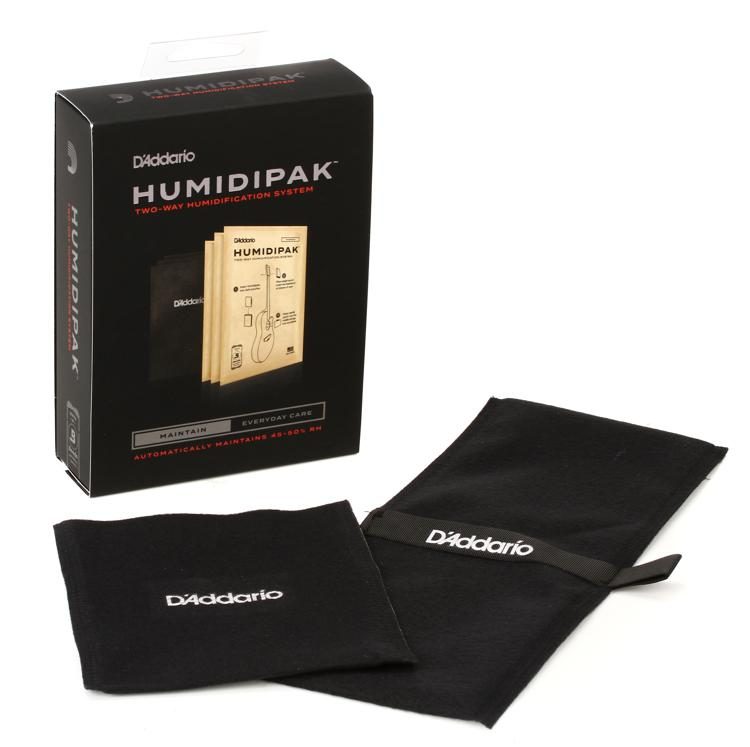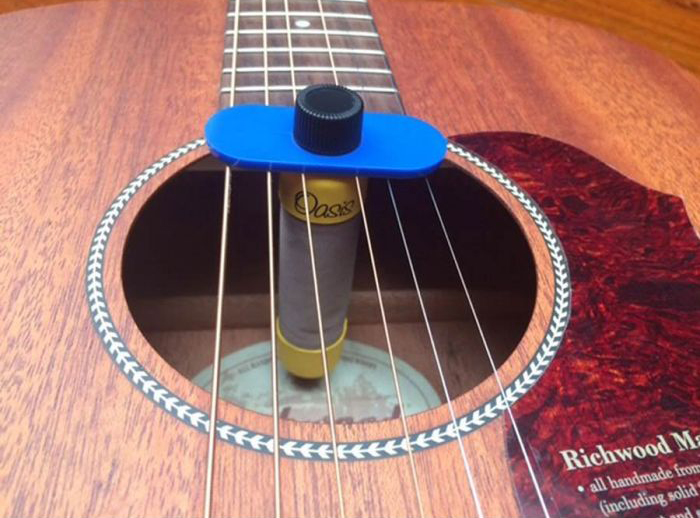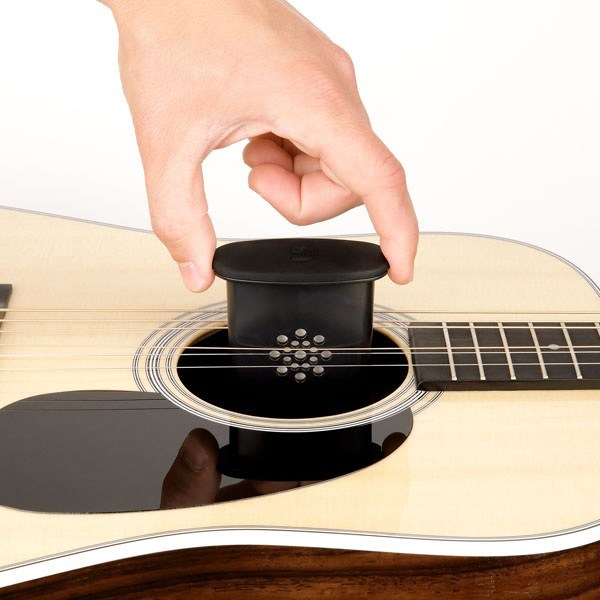
Contemporary Music Instruction and Mentoring
Taking Care of Your Guitar
Don't let let humidity and temperature changes ruin your guitar!
Your guitar has a very precise and intricate geometry. Any changes to that geometry either make it harder to play or make it sound badly (such as string buzzing).
With a guitar made of solid carbon fiber, the geometry will always stay the same, regardless of temperature and humidity. A guitar made of a thick piece of solid hardwood is also fairly stable, which is why electric guitars are somewhat resistant to damage from changes in humidity and temperature. Extreme dryness or heat/cold may cause hairline cracks to the finish, but the electric guitar will stay playable. Nobody I know worries about humidifying electric guitars.
In contrast, acoustic guitars are built of very thin pieces of wood, and in most cases the soundboard is not even made of hardwood (most are made of spruce). None of the wood has any protection from humidity changes because the inside surfaces are raw, with no varnish or sealant of any kind, so the wood "breathes" whatever air it is exposed to. Because of all this, the woods can expand or contract significantly with temperature and humidity changes. Because different kinds of woods are used in the same guitar, some pieces expand at different rates than others.
Such swelling or shrinking can result in significant damage to the guitar, such as:
- The
varnish (or polyurethane or polyester) used to finish the
outside surfaces can develop fissures and cracks
- The
soundboard can become brittle and have less mass,
resulting in less richness in the sound
- The soundboard can rise to a more convex shape (resulting in a high, hard-to-play action)
- The soundboard can lower to a less convex or flat shape (resulting in string buzz, or sometimes in complete unplayability)
- The soundboard can crack and split (usually at the seam in the center - VERY bad for the guitar!)
- The
backboard and sides can also crack and separate
- The neck can shrink narrower, causing the frets to hang out the sides of the fretboard, which ruins the smooth feel
The ideal
environment for your guitar is the same environment in which
it was manufactured. That way, the wood will stay the
same thickness, density, and geometry it was when it was
formed into a guitar. For all quality guitar
manufacturers, the environment in the wood curing/storage
and manufacturing areas of the factory is controlled at
approximately 70 degrees and 50% humidity. That is why
your guitar should always be stored in 60-80 degrees F and
40-60% humidity.
Temperature has always been reasonably easy to
control. Perhaps not always convenient, but there is
never any guesswork. The bottom line for temperature
is this: Pretend your guitar is an infant child
dressed in a "onesey" with exposed arms and legs.
Never expose your guitar to any temperature you would not
expose your baby to. For example, never leave your guitar in your car. Not in
the summer, and not in the winter. A student
once asked me if she could leave her guitar in the car in
the winter if it were wrapped in a blanket. The answer
is no. The guitar has no internal source of heat and
within an hour will be the same temperature as the inside of
the car, blanket or no blanket.
Humidity is equally important as temperature, if not even more important. Link below to see a video of Bob Taylor of Taylor Guitars demonstrating the importance of humidity control.
LINK
HERE to see the damage caused by low humidity
Optional:
LINK
HERE to see how the guitar was repaired
LINK
HERE to see the results of the repair
In the
past, controlling humidity has been
problematic and complicated. First, you had to
purchase a hydrometer (humidity gauge), or else you had to
just guess what the humidity was. If you determined
or guessed that the humidity was too low, you had to
insert a "guitar humidifier" consisting of a damp sponge
in a plastic case into the guitar case and leave it in
until the sponge dried out, then repeat, until the water
content of the guitar wood was correct. But you had
to be very careful to not over-humidify the guitar with
this process, because too much humidity is almost as bad
for the guitar as is not enough humidity. Even with
a gauge, there was a lot of guesswork, trial and error,
and worry.
All that has changed in the last few years,
since D'Addario/Planet Waves introduced the world's first
and only automatic humidity control for guitars: the
Humidipak two-way humidification system (below). It
is available online and in guitar stores for $20.
This amazing invention controls the relative humidity in
the guitar case at 45-55%, with no hassle, no worries, and
no calculating or measuring with gauges. If there is
too much humidity, the Humidipak sucks the excess water
vapor out of the air. If there isn't enough
humidity, it releases water vapor into the air.
Thus, your guitar is always exposed to the perfect
environment whenever it is in its case. The
Humidipak system takes all the guesswork and hassle out of
maintaining proper humidity whenever your guitar is not
being played. There are only two downsides of the
Humidipak system. First, it requires that you have a
hardshell case. It does not work in gig bags or
canvas cases. Second, there is an ongoing
cost. The gel/salt/water packets eventually dry out
and have to be replaced, and until recently they were
fairly pricey. Fortunately, the price has of
replacement packs has recently dropped to about $15.
The ease and peace of mind are worth it, especially if you
have an over-$500 guitar.

I highly recommend that anyone who has an
over-$1,500 guitar purchase and always use the Humidipak
system. For under-$500 guitars it isn't worth the
ongoing cost. Between $500 and $1,500, it's a toss
up. If you want more information, there are many
videos on YouTube demonstrating and reviewing the
Humidipak system.
When the gel packs turn stiff and hard (they
feel like crystals rather than feeling like gel), they are
no longer working and need to be replaced. Some
people on the web have reported success re-hydrating the
packs, thus saving money and extending their life.
Buy an extra set of the packs. When the packs you
are using start to crystalize, take them out and put the
other set in. Don't throw away the aluminized
Zip-Lock style pouches they came in! Take the old
packs, place them in a Tupperware or Rubbermaid container
with a bowl of water in it to re-hydrate them. Do
not let the packs touch the water! Either place the
water in the bottom of the container and use a cup or
something else to place the packs on above the water, or
place the water in a bowl inside the container to the side
of the packs. In a few days the packs will be
re-hydrated and can be placed back into the Zip-Lock pouch
they came in, stored and ready for re-use. In this
manner you can probably get 3 or more cycles out of one
set of packs.
An even better way to accomplish the same thing
is to purchase an Oasis OH-1 guitar humidifier for about
$20. Fill it with distilled water and put it in the
sound hole with the Humidipaks. Refill it every two
weeks. The Humidipaks will absorb extra humidity
during the first week, then release that extra humidity
during the second week, after the Oasis dries out. I
have gotten years out of a set of Humidipaks instead of
months, by using this method.

If you cannot afford the Humidipak system, you
can still hydrate your guitar, just not as
accurately. In the Utah climate, anything is better
than nothing. For example, you can just use an Oasis
OH-1 without the Humidipaks. Or a super cheap way to
do this is to get an easy and inexpensive sponge
humidifier, and wet the sponge with ordinary tap water
once a week in summer and winter, and once every two weeks
in spring and fall. The Planet Waves GH Acoustic
Guitar Humidifier (below) is a good sponge humdifier,
which is available for $5-10.
